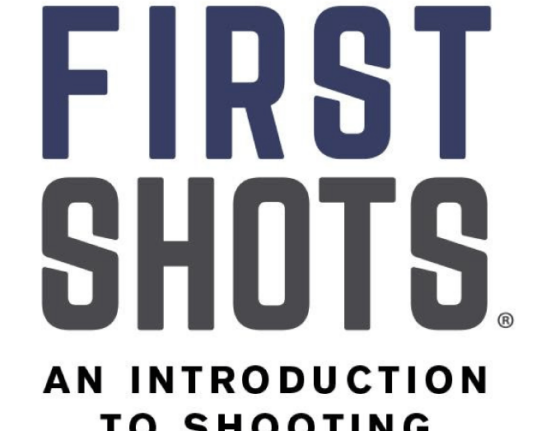Excerpted from Shot Business by permission of Bonnier Corp. Read the full story here. Photo courtesy of National Shooting Sports Foundation.
Social Marketing
Traditional marketing, aka “The way it’s always been done,” is giving the consumer a tangible reason to buy from you, such as offering a sale price or other value proposition. However, it creates a low level of engagement with a large, often uninterested audience. Today’s non-traditional advertising, whether it’s through Facebook, Twitter, or other social venues, delivers information to an engaged group of consumers, who in turn will spread that message to others.
Aside from a select few savvy marketers, the outdoors industry has been slow to adopt social media, but that has changed in a big way in recent years as brands such as Blackhawk, Badlands, and others have reaped big rewards by investing in relationships with their customers. Now it’s time for retailers to follow suit by creating honest relationships with core consumers.
“We look to drive engagement with social media,” says Tim Brandt, (former) communications director for ATK (now Vista Outdoors). “Consumers talk about our products, our competition, and our industry every day, but more important, they talk to us with social media. And in turn, we listen, learn, and interact. Through platforms such as Facebook, Twitter, and Google+, we’re able to form unique relationships with consumers, whereas opportunities with traditional media outlets are relegated to one-way, platform-specific, and mostly ‘one-size-fits-all’ messages to the masses.”
“Non-traditional marketing” doesn’t mean a funny cat picture posted on an otherwise inactive Facebook page, but that platform does offer the best way for all retailers to build their brand and create top-of-mind awareness in an otherwise noisy world. Facebook is also a way for small-shop owners to compete on a level playing field with big, multi-channel retailers.
“Whether you have a 300-square-foot store or you are the manager of a Cabela’s, you can gain a foothold in your local market and increase market share through social media,” says Justin Moore, director of marketing for Weatherby, a company that more than gets social media. “It’s the one medium that gives everyone the same opportunities to share with their followers, for free. No matter what your marketing or advertising budget is, you can create a Facebook page that looks just like the world’s biggest retail store’s page. Be creative, offer incentives, make your page interesting to visit and the people will follow.”
So, what is a Facebook page or Twitter feed for, if not to post funny cat pictures or anti–government rants? It’s for curating the public face of your brand. Sure, you can share what sales you are currently running, but don’t make it a hard sell. Show what your store looks like, and who your employees are. Work to obtain professionally produced online content from manufacturers showing who makes their products, and how. All this creates an engagement with your customer that, though you might not think it, translates into sales when those customers decide to buy.
“To a large majority of the people that buy your product or visit your store, you have the world’s best job,” says Moore. “Share it with them, and they will be happy to listen.”
Millennials
The Millennials—people born in the ’80s and ’90s—might be the most difficult demographic to market to. No other group has so much information and advertising competing for its attention, and, having come of age during the most recent financial crisis, Millennials are more savvy when it comes to spending their money than you might imagine. Capturing some of those dollars can be confusing, but it’s not impossible.
A good start would be to reread the section on social marketing, above; marketing to the 100-million-strong Millennial Generation means engaging them on their terms and creating a social connection that transfers to the rest of their tribe. At the core, it’s still Marketing 101 in terms of the need to build relationships with your consumer. It’s the means to that end that are a challenge.
“The current generation is deeply imbedded into a ‘reality-driven’ lifestyle,” says Wendy Cunningham, social media coordinator for Leupold, who was recently hired to tap into young shooters and hunters. “Social media allows us to interact with our consumers on a real-time basis, creating a more personal relationship with our end user.”
For being such a diverse group of individuals, Millennials actually work hardest at being part of a group, or more accurately, as many groups as possible. Through their smartphones and tablets, they are connected to their peers at all times. They do nothing alone—not even shopping—so don’t be afraid when they pull out their smartphone. Usually they’re looking for validation for their purchases, so give them reasons to let their friends and followers know about your location, your products, and your services. If their friends deliver positive feedback, you’ve not only made that sale, but also created touch-points with an almost infinite number of new customers in their wide sphere of influence.
“The value in social media is in the almost real-time interaction we are able to have with our customers and fans,” says Blake VanTussenbrook, marketing director for Vortex Outdoors, maker of Badlands Packs. “What we’ve found is that our customers and potential customers really feel like they have a personal relationship with the brands they use. Having customers post reviews and tips helps us improve as a company and continue to bring the products to market that people want most. Social media is also an amazing outlet to share content—whether it’s a video of a hunt or a review of a piece of gear—and provides a gateway for consumers to voice their opinions and ideas and know that they are being heard.”
Peer validation, social acceptance, instant gratification. Although it might sound as if you’re dealing with children, realize Millennials are actually incredibly perceptive about the ways of the world. They’ve grown up with the internet, plugged into information in a way older generations are still struggling to grasp, and can instantly find the answers they need while you’re still trying to remember the password to your AOL account. They great thing is, this group is happy to share that information willingly, which leads to the best advice for marketing to Millennials—hire one.







